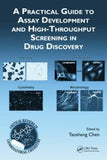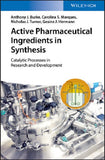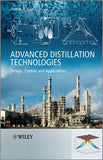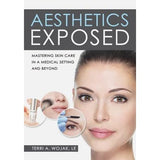Dermal Absorption and Toxicity Assessment Second edition edited by Michael S. Roberts
SPECIAL INDIAN REPRINT !
Dermal Absorption and Toxicity Assessment
Second edition
edited by Michael S. Roberts
Dermal Absorption and Toxicity Assessmentsupplies a state-of-the-art overview of the dermal absorption process.
The book covers a wide range of methods used to assess skin absorption and the various governmental and industrial programs concerned with skin permeation and toxicity. These include alternative in silico, in vitro, and in vivo strategies to conduct studies for regulatory requirements.
Features:
- completely revised and updated—expanded to include coverage pertaining to innovative research
- expands on the specific barrier properties of the skin such as its physical structure, biosensor properties, cutaneous metabolism, skin lipid morphology, and dermal blood and lymphatic flow.
- examines both the standard established laboratory techniques, for example, diffusion cell technology, and also covers new techniques like cultured skin equivalents, dermal absorption, and risk assessment
Contents
Introduction
- Human Skin Morphology and Dermal Absorption
- Animal Skin Morphology and Dermal Absorption
Skin Barrier Properties and Absorption
- The Physical Structure of the Skin Barrier
- Morphology of Epidermal Lipids
- Stratum Corneum as a Biosensor
- Cutaneous Metabolism
- Formulation Issues
- Interpretation of In Vitro Skin Absorption Studies of Lipophilic Chemicals
- Use of Skin Equivalents for Dermal Absorption and Toxicity
- Skin Absorption as Studied by Spectroscopic Methods
Modeling of Dermal Absorption and Risk Assessment
- Physiologically Based Pharmacokinetics and Pharmacodynamics of Skin
- Beyond Stratum Corneum
- Biophysical Models for Skin Transport and Absorption
- Mathematical Models for Different Exposure Conditions
- Modelling Skin Permeability in Risk Assessment
- In Vitro-In Vivo Correlations in Transdermal Drug Delivery
- Estimation of Subsequent Systemic Exposure - Physiological Models
- RISKOFDERM - Predictions Based on In Vivo Factors
Skin Toxicity and Prevention
- Quantitative Structure-Activity Relationships for Skin Corrosivity and Sensitization
- Allergic Contact Dermatitis
- Irritancy of Topical Chemicals and Transdermal Drug Delivery Systems
- Phototosensitivity Induced by Exogenous Agents: Phototoxicity and Photoallergy
- Systemic Toxicity Caused by Absorption of Drugs and Chemicals Through Skin
- Solvent and Vehicle Effects on the Skin
Regulatory Issues
- United States Environmental Protection Agency P3erspectives on Skin Absorption and Exposure
- Dermal Absorption of Chemicals: Some Australian Regulatory Considerations
- International Perspectives in Dermal Absorption
- Structure-Activity Relationships and Prediction of Photoallergic and Phototoxic Potential
- Potential Regulatory Use of (Q)SARs to Develop Dermal Irritation and Corrosion Assessment Strategies
- Development of (Q)SARs for Dermal Irritation and Corrosion Assessment Using EU New Chemicals Notification Data
- Regulatory Assessment of Skin Sensitization
- Assessment of Topical Bioequivalence Using Microdialysis and Other Techniques
- An Industry Perspective of Topical Dermal Bioequivalence
Specific Examples of Absorption
- Dermal Absorption of Chemical Contaminants from Soil
- Percutaneous Absorption of Pesticides
- Bathing Water: Percutaneous Absorption of Water Contaminants
- Percutaneous Absorption of Pro- and Soft- Drugs
- Skin Penetration of Cosmetic Ingredients and Contaminants
- Percutaneous Absorption of Hair Dyes
- Percutaneous Absorption of Fragrance Materials
Index


















